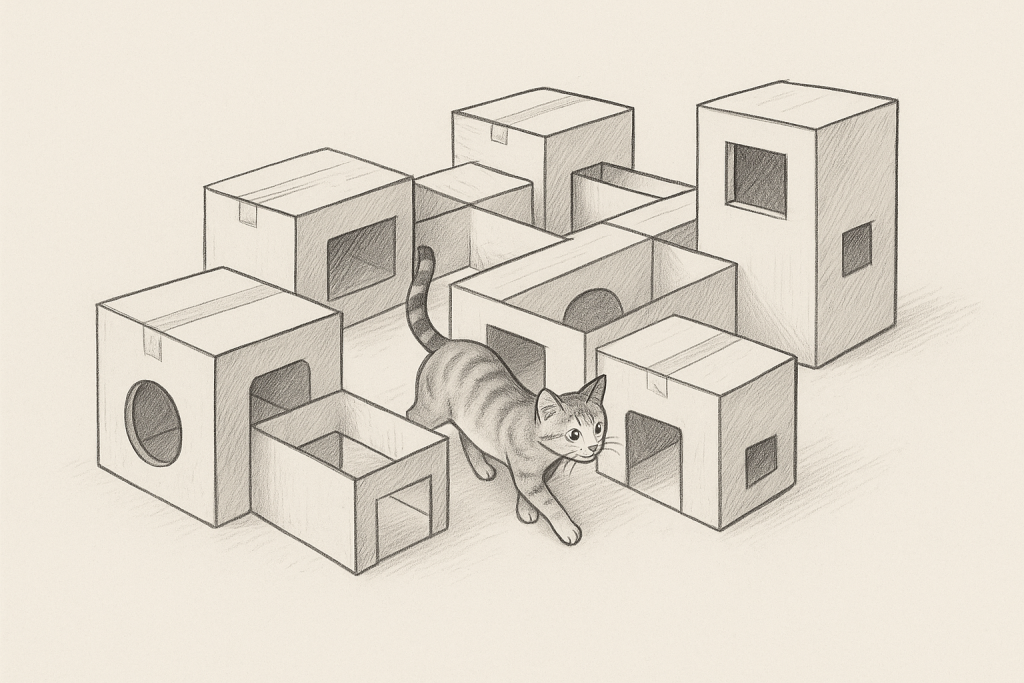Cats are natural puzzle-solvers, hunters, and explorers. If you’ve ever watched your cat squeeze into a cardboard box or stalk a feather toy, you’ve seen their instinct to explore in action. A homemade cat maze isn’t just a quirky DIY project — it taps into your cat’s primal behaviors and supports their physical and mental health.

1. The Science of Cat Mazes
Environmental enrichment — giving animals new experiences and challenges — is crucial for indoor cats. Research in feline behavior shows that mazes and puzzle toys reduce boredom, prevent destructive habits, and even lower stress hormones. A well-designed maze offers opportunities to hide, climb, and hunt, mimicking the complexity of outdoor environments.
2. Choosing the Right Materials
Cats love textures and variety, but safety comes first. Cardboard boxes are a classic choice because they are chew-safe, lightweight, and recyclable. For a more durable design, you can use wooden crates or modular plastic cubes. Avoid materials with sharp edges, toxic glue, or loose staples.
3. Designing a Cat-Friendly Layout
A good maze isn’t just random tunnels — it considers how cats move:
- Multiple entrances and exits prevent your cat from feeling trapped.
- Varying tunnel sizes encourage stretching, crouching, and jumping.
- Vertical elements like box towers satisfy climbing instincts.
- Peek holes let cats spy on the world (or you) without being seen.
4. Adding Mental Stimulation
Turn the maze into a brain game by hiding treats, catnip, or small toys inside. Rotating the layout every few weeks keeps the maze novel and challenging. This unpredictability mimics the ever-changing “hunting grounds” cats would encounter outdoors.
5. Training and Encouraging Play
Not all cats dive into a maze right away — some need a little encouragement. Use positive reinforcement:
- Scatter a trail of treats leading inside.
- Wiggle a feather toy through openings to entice curiosity.
- Let your cat explore at their own pace rather than forcing them in.
6. Human Benefits of Building a Cat Maze
Beyond entertaining your cat, building a maze can be surprisingly therapeutic for you. The creative process stimulates problem-solving skills and gives a sense of accomplishment. Plus, watching your cat solve the maze is a form of “slow entertainment” that lowers stress — a win-win enrichment experience.
7. Eco-Friendly Bonus
Using recycled boxes or upcycled materials keeps the project sustainable. Cats are naturally eco-friendly play testers — they often prefer the box to the expensive toy that came inside it. Turning those boxes into a maze gives them a second life.
In short, a cat maze is more than a playground — it’s a mini ecosystem that challenges your cat’s mind and body. By creating one at home, you are not just entertaining your feline friend but enriching their life in a scientifically meaningful way.
